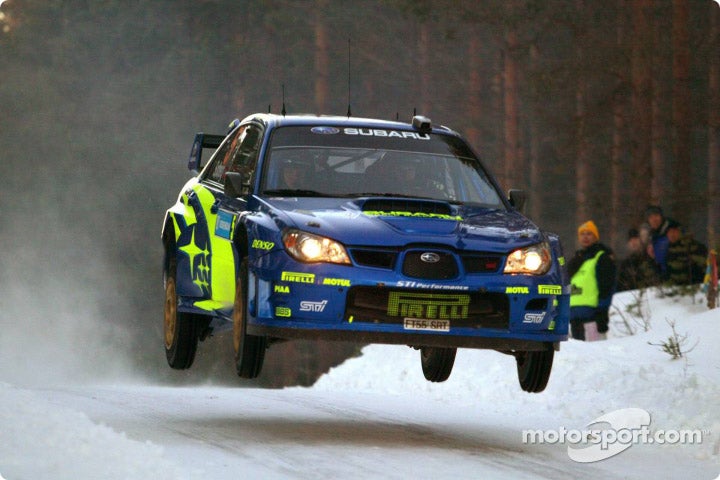 "Stupidru" (Schm1an)
"Stupidru" (Schm1an)
01/20/2014 at 23:43 • Filed to: None
 0
0
 9
9
 "Stupidru" (Schm1an)
"Stupidru" (Schm1an)
01/20/2014 at 23:43 • Filed to: None |  0 0
|  9 9 |

After noticing poor gas mileage lately, I filled my tires up and noticed 2 of them were at 20psi, one at 25psi and one at 30psi.
All tires were filled up to 45psi- a little high, but temperatures are supposed to plummet next week which will effectively lower the pressure. I figure by the time the temperatures come back up I'll have lost a pound or two and they'll settle around 40psi
PV=nRT
^^ Science bitch!!!
 TurboSloth
> Stupidru
TurboSloth
> Stupidru
01/20/2014 at 23:46 |
|
Wait, I have a question. In snow, is it more beneficial to run a low tire pressure or high tire pressure? I remember as a kid, I found that riding my bike in the snow was easier with semi-deflated tires.
 themanwithsauce - has as many vehicles as job titles
> Stupidru
themanwithsauce - has as many vehicles as job titles
> Stupidru
01/20/2014 at 23:47 |
|
I run ~35 since that's recommended. I notice I actually lost some traction on the snow when my pressures were just above 20 after our first temperature fall. I think during the next "polar vortex" I'll run ~30 unless we get heavy snow again, then I'll keep it at 35-40.
 Stupidru
> TurboSloth
Stupidru
> TurboSloth
01/20/2014 at 23:49 |
|
Is it easier to cut a pizza with a thin blade or with a steam roller?
 HammerheadFistpunch
> TurboSloth
HammerheadFistpunch
> TurboSloth
01/20/2014 at 23:49 |
|
in the winter, you want skinny tires. You will never lower your pressure enough to gain floatation on snow, so your best bet is to cut through to the pavement, plus if you present less tire to the snow, you have more stability in general.
or put simply

 Zoom
> Stupidru
Zoom
> Stupidru
01/20/2014 at 23:53 |
|
45 is a lot high. For any make or model. Fill tires to what the loading label on the door jamb recommends. That label is from the auto manufacturer, not the tire maunufacturer. You may have read the number on the side of the tire, which is max pressure for the tire from the tire manufacturer. Chances are, vehicle engineering has chosen a much different number.
For colder weather, I will fill my tires just 2-3 pounds light, only if traction demands it.
Remember two other things.
1. You lose or gain 1psi per 10 degrees of temp rise or drop. and
2. Colder temps drop the pliability of the tire. They are less 'soft'. So accurate sealing against the rim becomes an issue, it makes them more likely to leak. So check them more often when its cold.
 Stupidru
> Zoom
Stupidru
> Zoom
01/21/2014 at 00:06 |
|
I've filled tires with 40-profile sidewalls up to 50psi before and had no ill effects aside from a sore rear-end. I might drop these down to 40psi just because of the pliability in colder temps, but I'm going to see how my commute is tomorrow and relieve some of the pressure if I feel like the ride is too harsh. Having 4 stiff-walled pressure vessels underneath my bum makes me a little uneasy
 Zoom
> Stupidru
Zoom
> Stupidru
01/21/2014 at 00:23 |
|
Agreed.
But remember the max recommended inflation pressure on the sidewall is at max load. If you run them that way any serious length of time anywhere under max load, you 'balloon', wear out the center of the tire lots quicker, and you actually lose contact patch.
 M54B30
> Stupidru
M54B30
> Stupidru
01/21/2014 at 01:03 |
|
I put in exactly what BMW recommends - 33 in the front, 41 in the rear. If there was a better pressure to put them at, the millions they put into R&D would've figured it out.
 Stupidru
> M54B30
Stupidru
> M54B30
01/21/2014 at 01:22 |
|
This is probably for comfort. There are lots of autocrossers who have spent lots of time running different combinations of pressures to gain a few tenths of a second... all in the name of performance. And each tire reacts differently to varying pressures. I care about tire performance in the snow and saving a bit of gas, so I pumped mine up a bit, but I'm going to take them down to 40psi tomorrow